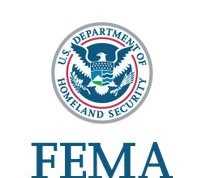Housing Protections Fall Short for Domestic Violence Survivors
States Must Act to Fill Gap in Federal Law
WASHINGTON, D.C. – March 14, 2013 – (RealEstateRama) — One week after President Obama signed the Violence Against Women Act, the National Law Center on Homelessness & Poverty has released a new report showing that state action is still urgently needed to prevent homelessness for survivors of domestic and sexual violence.
In some areas of the country, one in four homeless adults report domestic violence as a cause of their homelessness. Moreover, between 50 and 100 percent of homeless women nationwide have experienced domestic or sexual violence at some point in their lives. Theres No Place Like Home provides a comprehensive examination of the canon of state laws designed to address housing instability for survivors.
The federal Violence Against Women Act (VAWA), signed into law on March 7 following advocacy by the Law Center, includes numerous housing protections for survivors living in public and Section 8 housing, as well as all housing programs administered by the U.S. Department of Housing and Urban Development, USDA, and Low-Income Housing Tax Credit (LIHTC) program. These protections include the rights to early lease termination, emergency transfer, and freedom from discrimination based on their status as survivors.
Unfortunately, VAWAs protections do not apply to private housing, meaning that without strong state laws, survivors are faced with the horrifying choice of remaining with an abuser or ending up on the street, said Maria Foscarinis, executive director of the Law Center. Many states have taken action, but much more must be done.
Theres No Place Like Home outlines legislation in all 50 states covering 16 types of housing protections, including: prohibitions against housing discrimination against victims of abuse; provisions allowing a battered tenant to terminate a lease early to flee violence; and provisions that protect the confidentiality of domestic violence victims housing records; among others. In addition to examining the laws in each state, the guide highlights particularly noteworthy statutes in each area of concern.
Were pleased to see that the majority of states have enacted some type of housing protection for survivors of domestic and sexual violence, said Lisa Coleman, the Law Centers domestic violence attorney. However, few states have enacted legislation on critical protections that often make all the difference in promoting housing stability for survivorsincluding providing for the right to take off work to seek safe housing. The law is moving in the right direction, but we still have a long way to go. We urge legislators at all levels of government to step up to the plate and solve this problem.
To read the report, click here.
The Law Center is hosting a free webinar to discuss the report April 4, 2013 from 2-3 p.m. EST. To register, click here.
The National Law Center on Homelessness and Poverty is a leader in the movement to prevent and end homelessness. To achieve its goal, the Law Center uses three main strategies: policy advocacy, public education, and impact litigation.
Contact:
Robert Bennett
Email:











